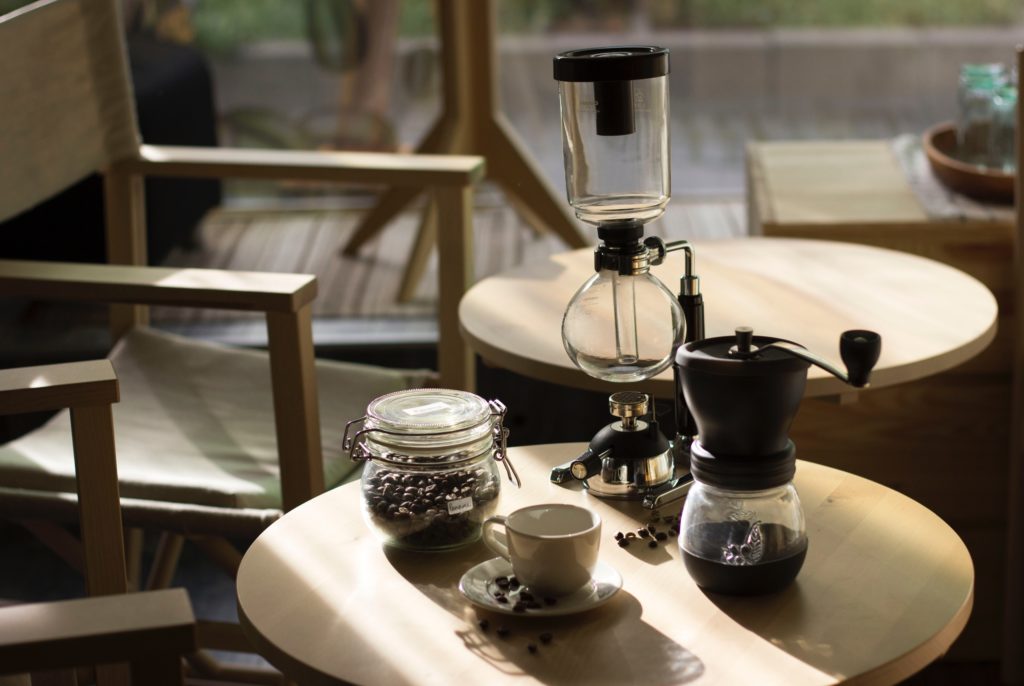Preparing coffee with the Syphon, also known as the ‘vacuum pot’, is such an experience. Not only brewing yourself but also looking at the process. We will explain the exact meaning of this brewing term.
Syphon history
There are two people associated with the invention of the vacuum pot. The first one is Leoff of Berlin from Germany. He officially invented this vacuum tool in 183. However, it was a woman named Marie Fanny Amelne Massot of Lyons, from France, who created and patented the first commercial vacuum, coffee maker. This all happened around 1941.
Today, it’s still a popular way to brew delicious coffee.
How does the vacuum pot work?
A vacuum coffee maker has two glass chambers. The bottom one is filled with water, while the top is empty at first. You start with heating the bottom chamber so the water will start boiling. By heating the bottom chamber, you create vapor pressure. Therefore, the hot water is pushed into the top chamber. By adding the coffee grounds, the brewing process starts.
After some minutes, you turn down the heat source. That moment the pressure will shift. The result is that the coffee ends up back in the bottom chambers. Between the two chambers, there’s a filter that will trap the coffee grounds and produces a clear coffee.
The taste
Brewing coffee with the Syphon, takes a little bit more time than other brewing methods. However, besides the experience, the taste is also really worth the effort. This method is very suitable for a lighter roast. Some brewing methods use direct heat which can make the coffee quite bitter. With the Vacuum Pot, where there is an indirect heat method used, this isn’t the case. This makes the vacuum tool very convenient.

Any questions or would you like to find out more about roasting and coffee? Check out our knowledge base.





